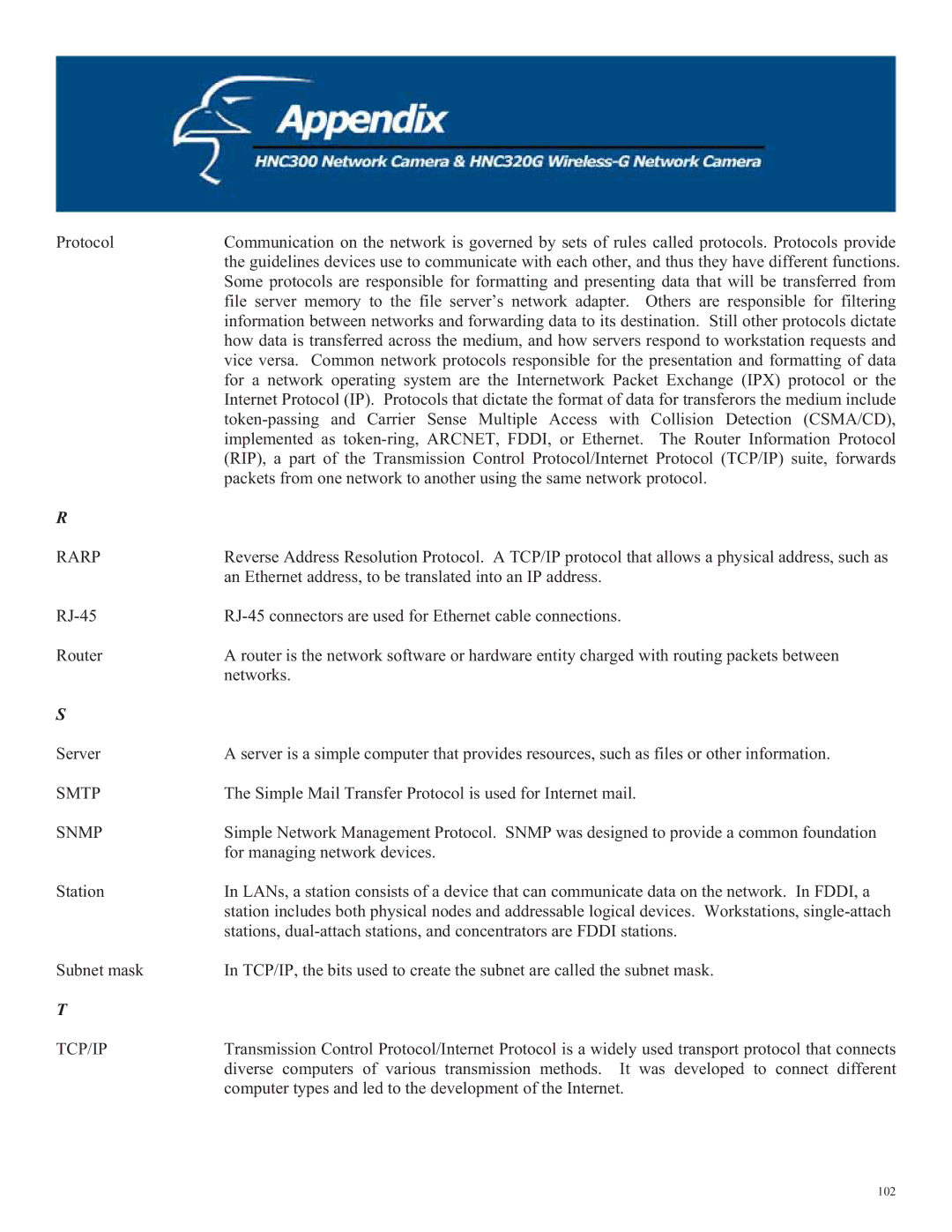
Protocol | Communication on the network is governed by sets of rules called protocols. Protocols provide |
| the guidelines devices use to communicate with each other, and thus they have different functions. |
| Some protocols are responsible for formatting and presenting data that will be transferred from |
| file server memory to the file server’s network adapter. Others are responsible for filtering |
| information between networks and forwarding data to its destination. Still other protocols dictate |
| how data is transferred across the medium, and how servers respond to workstation requests and |
| vice versa. Common network protocols responsible for the presentation and formatting of data |
| for a network operating system are the Internetwork Packet Exchange (IPX) protocol or the |
| Internet Protocol (IP). Protocols that dictate the format of data for transferors the medium include |
| |
| implemented as |
| (RIP), a part of the Transmission Control Protocol/Internet Protocol (TCP/IP) suite, forwards |
| packets from one network to another using the same network protocol. |
R |
|
RARP | Reverse Address Resolution Protocol. A TCP/IP protocol that allows a physical address, such as |
| an Ethernet address, to be translated into an IP address. |
Router | A router is the network software or hardware entity charged with routing packets between |
| networks. |
S |
|
Server | A server is a simple computer that provides resources, such as files or other information. |
SMTP | The Simple Mail Transfer Protocol is used for Internet mail. |
SNMP | Simple Network Management Protocol. SNMP was designed to provide a common foundation |
| for managing network devices. |
Station | In LANs, a station consists of a device that can communicate data on the network. In FDDI, a |
| station includes both physical nodes and addressable logical devices. Workstations, |
| stations, |
Subnet mask | In TCP/IP, the bits used to create the subnet are called the subnet mask. |
T |
|
TCP/IP | Transmission Control Protocol/Internet Protocol is a widely used transport protocol that connects |
| diverse computers of various transmission methods. It was developed to connect different |
| computer types and led to the development of the Internet. |
102
